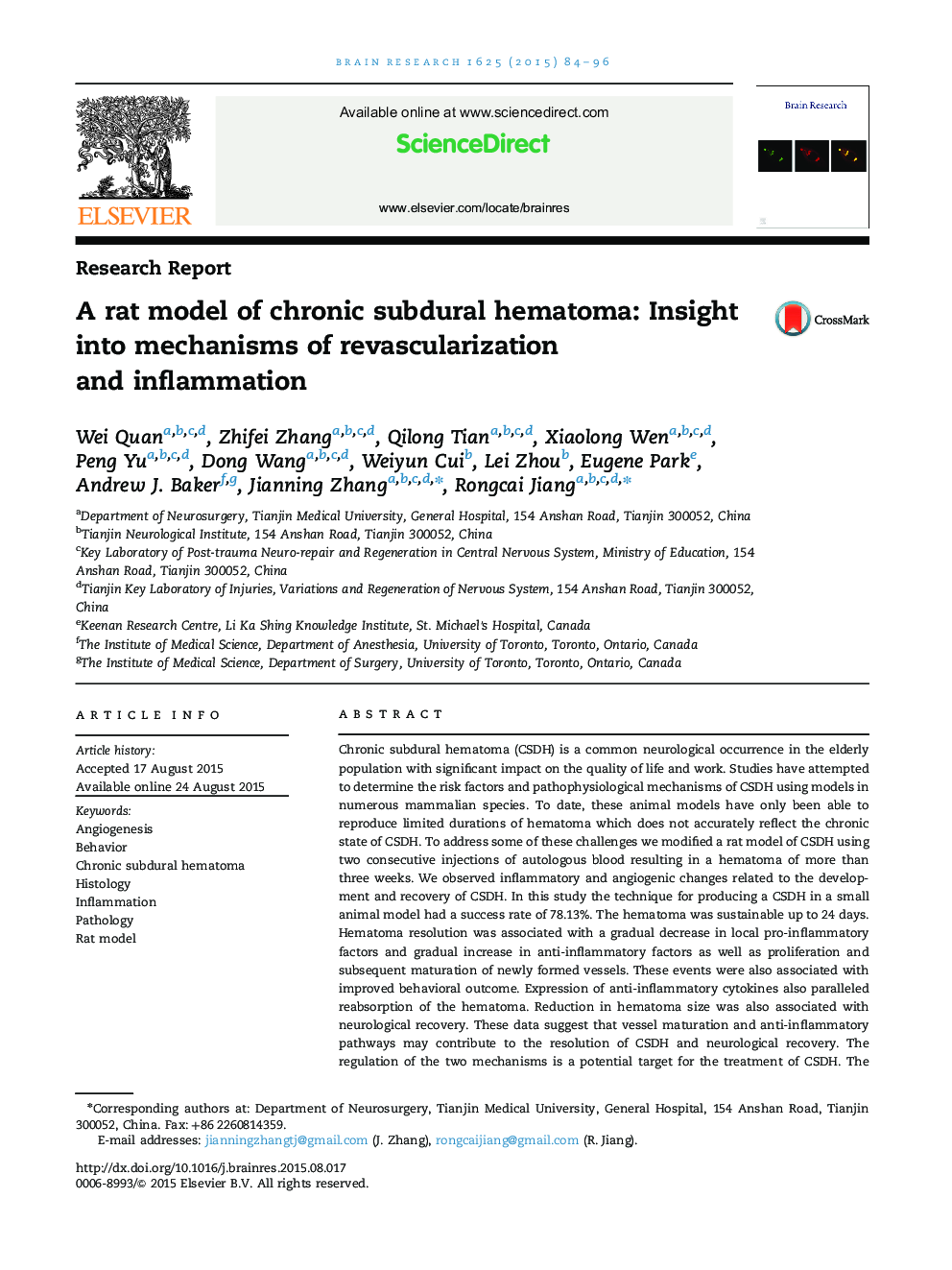| کد مقاله | کد نشریه | سال انتشار | مقاله انگلیسی | نسخه تمام متن |
|---|---|---|---|---|
| 6262854 | 1613814 | 2015 | 13 صفحه PDF | دانلود رایگان |
- Two autologous blood injections used to produce a subdural hematoma in rats.
- The subdural hematoma persists for up to 24 days.
- Late anti-inflammatory cytokine expression parallels hematoma absorption.
- Mature vessel formation was associated with clearance of the hematoma.
Chronic subdural hematoma (CSDH) is a common neurological occurrence in the elderly population with significant impact on the quality of life and work. Studies have attempted to determine the risk factors and pathophysiological mechanisms of CSDH using models in numerous mammalian species. To date, these animal models have only been able to reproduce limited durations of hematoma which does not accurately reflect the chronic state of CSDH. To address some of these challenges we modified a rat model of CSDH using two consecutive injections of autologous blood resulting in a hematoma of more than three weeks. We observed inflammatory and angiogenic changes related to the development and recovery of CSDH. In this study the technique for producing a CSDH in a small animal model had a success rate of 78.13%. The hematoma was sustainable up to 24 days. Hematoma resolution was associated with a gradual decrease in local pro-inflammatory factors and gradual increase in anti-inflammatory factors as well as proliferation and subsequent maturation of newly formed vessels. These events were also associated with improved behavioral outcome. Expression of anti-inflammatory cytokines also paralleled reabsorption of the hematoma. Reduction in hematoma size was also associated with neurological recovery. These data suggest that vessel maturation and anti-inflammatory pathways may contribute to the resolution of CSDH and neurological recovery. The regulation of the two mechanisms is a potential target for the treatment of CSDH. The modified model of rat CSDH demonstrated a high level of reproducibility in our hands and may be useful in future CSDH studies.
Journal: Brain Research - Volume 1625, 2 November 2015, Pages 84-96
